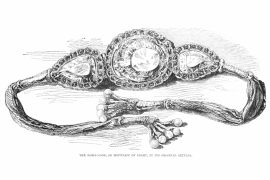In 1990, a two-page coloured advertisement in the Times of India featured independent, professional women. How do we know they are ‘professional’ and ‘independent’? Well, they were in affluent settings and wore Western clothes. The ad was for the Golden Tobacco Company’s ‘new’ ‘MS Special Filter,’ a cigarette made exclusively for women. That could only mean forward, modern, and empowered women. No?
It’s no secret that cigarette manufacturers have employed wicked marketing techniques, akin to guerrilla warfare, to convince the customer not just to buy a product but to buy into a community. The product, their cigarettes, are just a representation of that community. So you are not buying cancer packed in a box, but a symbol of masculinity, wealth, equality and empowerment, or even health!
Cigarette companies create propaganda campaigns to affirm notions of masculinity. It should be no surprise, as gender-based marketing has historically played a big role in promoting smoking, and men have always provided a bigger market. Many cigarette companies have targeted men and pried on their insecurities created by social constructs of gender with the most outrageous, if not offensive, campaigns.
Marlboro Man, created by Leo Burnett Worldwide advertising company, presented an image of a rugged, tough cowboy with a tan and an intimidating demeanour. The chief marketing rogues at Marlboro, who were initially focused on women as their target audience, changed their focus.

When they chose men, they presented an image of manliness. So, a man who smoked Marlboro was presented as confident, hard-working and, most importantly, macho; the cigarette in his hand was an extension of his masculinity. The campaign increased the sales of Marlboro cigarettes by 300 per cent in the first two years after its launch in 1955.
VST tobacco’s Charminar cigarettes—big on portraying a masculine, rugged, ladies’ man—was an instant hit in India and was amongst the top-selling cigarettes of India before its collapse in 1988-89. Through their advertising, they commercialised toxic social messages like, ‘it takes a Charminar to satisfy a man like you,’ and ‘Give me a bike… Give me a highway… Give me my girl… And give me the taste of toasted tobacco.’ The advertisement employed popular actors of that era—such as Jackie Shroff—to fit the social idea that man must be ‘rugged’ (whatever that means), and a man needed a Charminar to ‘relax.’
Similarly, many cigarette companies promoted the idea of manliness through smoking. However, it is ironic that a cigarette is portrayed as a symbol of masculinity because studies have linked smoking to infertility and impotence, in addition to many cardiovascular diseases and cancers.
In addition to prying on masculinity, advertising has also played on wealth disparities based on the cost and quality of their tobacco. With innovative packaging, cigarette brands like 555, India Kings, Wills Classic, and Godfrey Phillips presented themselves as status symbols, social markers that display wealth and ‘class.’
People protested against the marketing campaign for women, which was mentioned earlier, and was ultimately pulled down. Though the women weren’t shown smoking, the appearance of female models symbolised emancipation. The copy read, ‘Just give us a call, and we will deliver a carton at your address,‘ to encourage women to smoke.
Marketing campaigns have targeted women all over the world. In the early twentieth century, cigarette companies capitalised on feminism and presented a cigarette as a ‘torch of freedom.’ The campaign has been marked as one of the greatest achievements of Edward Louis Bernay, the pioneer of marketing and public relations in the United States.
At the time, Bernay had been working for the American Tobacco Company, promoting the Lucky Strike Cigarettes. He pulled a publicity stunt during the Easter Sunday Parade of 1929, where he paid women to smoke in public. And did the tactic deliver? Indeed. As women marched on the streets with a cigarette, it became a symbol of emancipation.
After the huge success of making Marlboro a man’s cigarette, Philip Morris appealed to women with the new Virginia Slims with feminine, ‘slimmer than the usual’ cigarettes in 1968. Morris’s campaigns for Virginia Slims evolved with different calls of feminist movements— from ‘You’ve come a long way, baby’ to ‘It’s a Woman Thing’ to ‘Find Your Voice.’ The last campaign was launched in 1999, featuring women of colour, explicitly suggesting they needed a mode of expression, and Virginia Slims, their patron.
Marketing didn’t just commercialise a movement to target women but even promoted smoking as a habit to help them stay in shape. The same company came up with the campaign ‘Reach for Lucky instead of a Sweet’ that promoted cigarettes as a way to curb hunger and slim waists. The company saw a 200 per cent increase in Lucky Strike market shares and became the best-selling brand for two years.
If that was not enough, an ad by Winston Cigarettes promoted ‘Smoking for Two.’ It featured pregnant women smoking and read: ‘Taste isn’t the only reason I smoke.’ The campaign falsely claimed that smoking during pregnancy resulted in low birth weight.
The dangers of smoking were obfuscated to bring more women into the tobacco market with sheer lies. The effects of smoking on women’s health are different from those of men. In addition to causing lung and throat cancer, smoking could cause infertility and delays in conceiving. Smoking during pregnancy could result in stillbirth, premature delivery, miscarriages, or troubled production of breast milk, let alone ‘easy labor’ or ‘slim baby’ that the Winstons claimed.
Before the reports that confirmed the health hazards of smoking, cigarette companies blatantly promoted that doctors recommended smoking for health benefits. The Philip Morris Company sponsored doctors in 1937 to claim that ‘when smokers changed to Philip Morris, every case of irritation cleared completely and definitely improved.’
In 1946, R.J. Reynolds advertised Camel cigarettes by sponsoring a medical survey which found that ‘more doctors smoke Camels than any other cigarette.’ How did they get to that conclusion? They gave free cartons of Camels to the doctors and then asked them what cigarettes they were using.
Until restrictions were applied, marketing strategies cheated consumers with lies and deceit. Cigarettes—health hazards and severe sources of addiction—were presented as symbols of community empowerment. It was not until the mid-1950s that evidence of the harmful effects of tobacco was presented to the world. Cigarette packages were labelled with warning signs of cancer only as recently as May 31, 2009, in India and issued with pictorial warnings from December 1, 2011.
-30-
Copyright©Madras Courier, All Rights Reserved. You may share using our article tools. Please don't cut articles from madrascourier.com and redistribute by email, post to the web, mobile phone or social media.Please send in your feed back and comments to [email protected]











